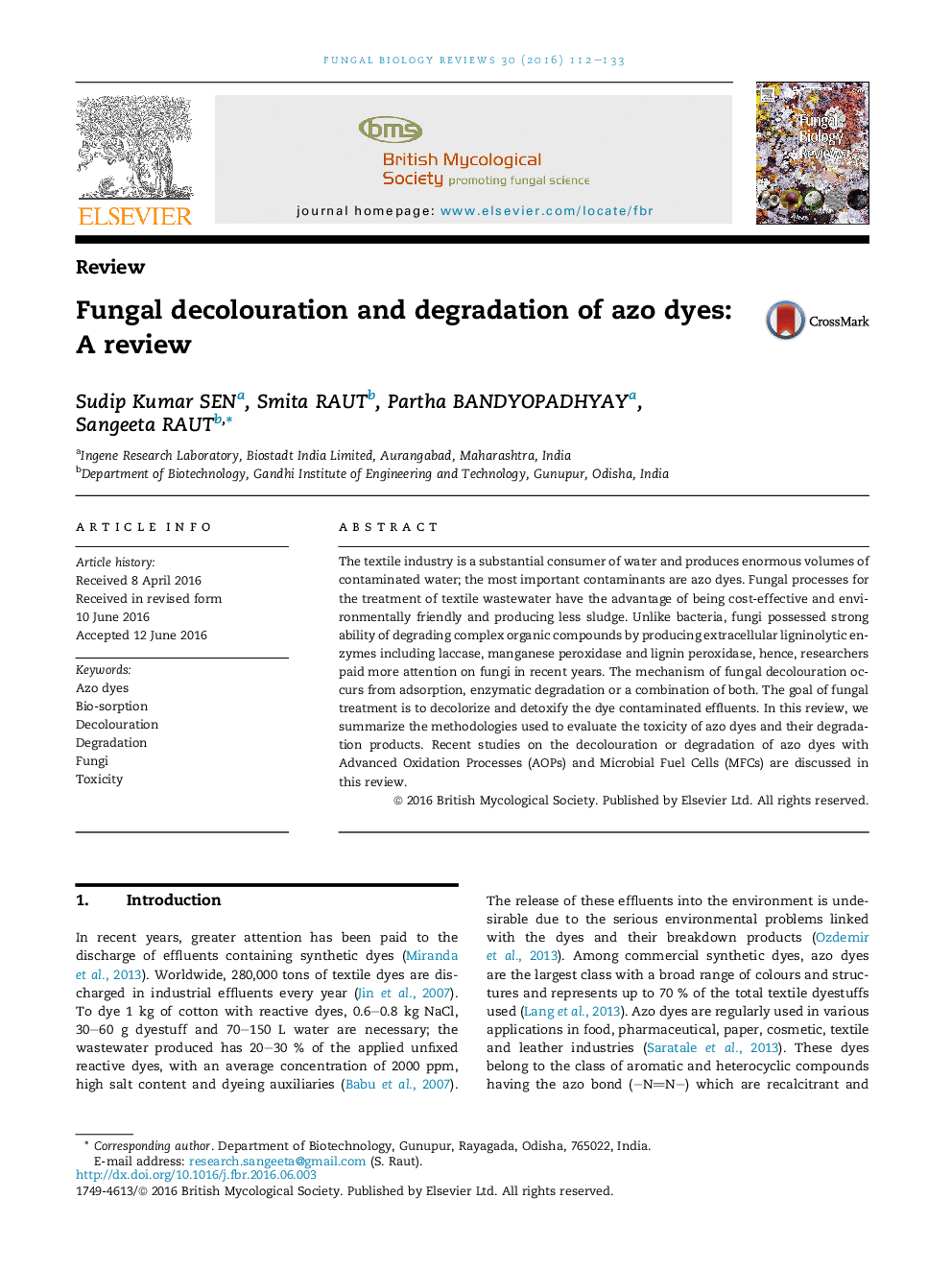| کد مقاله | کد نشریه | سال انتشار | مقاله انگلیسی | نسخه تمام متن |
|---|---|---|---|---|
| 2180441 | 1401965 | 2016 | 22 صفحه PDF | دانلود رایگان |
• Recent studies on the use of fungi and enzymes for bioremediation of azo dyes are surveyed.
• Various approaches using fungal/enzymatic degradation are summarized.
• Data is presented showing how various factors affect enzymatic azo dye degradation.
The textile industry is a substantial consumer of water and produces enormous volumes of contaminated water; the most important contaminants are azo dyes. Fungal processes for the treatment of textile wastewater have the advantage of being cost-effective and environmentally friendly and producing less sludge. Unlike bacteria, fungi possessed strong ability of degrading complex organic compounds by producing extracellular ligninolytic enzymes including laccase, manganese peroxidase and lignin peroxidase, hence, researchers paid more attention on fungi in recent years. The mechanism of fungal decolouration occurs from adsorption, enzymatic degradation or a combination of both. The goal of fungal treatment is to decolorize and detoxify the dye contaminated effluents. In this review, we summarize the methodologies used to evaluate the toxicity of azo dyes and their degradation products. Recent studies on the decolouration or degradation of azo dyes with Advanced Oxidation Processes (AOPs) and Microbial Fuel Cells (MFCs) are discussed in this review.
Journal: Fungal Biology Reviews - Volume 30, Issue 3, July 2016, Pages 112–133
